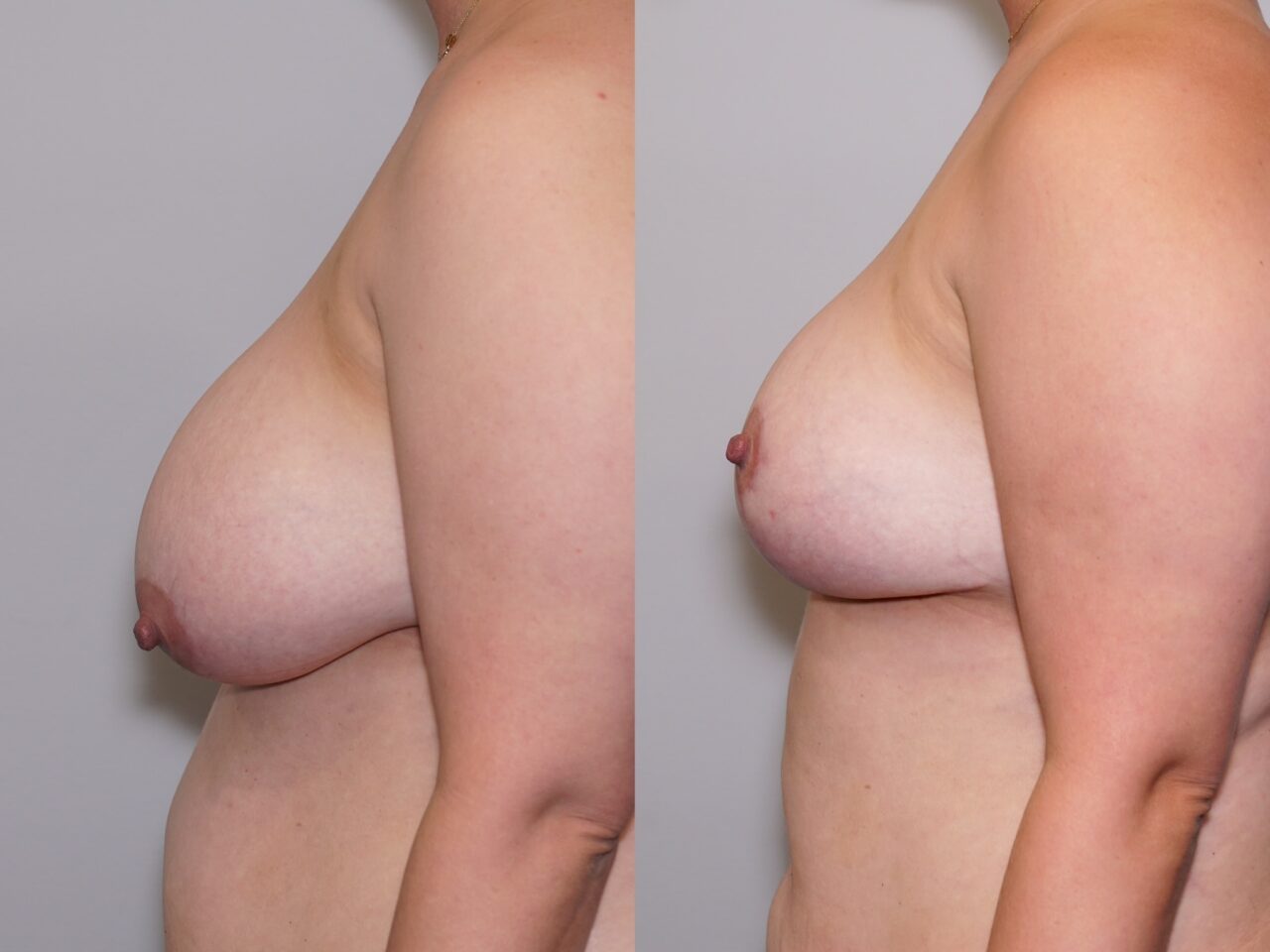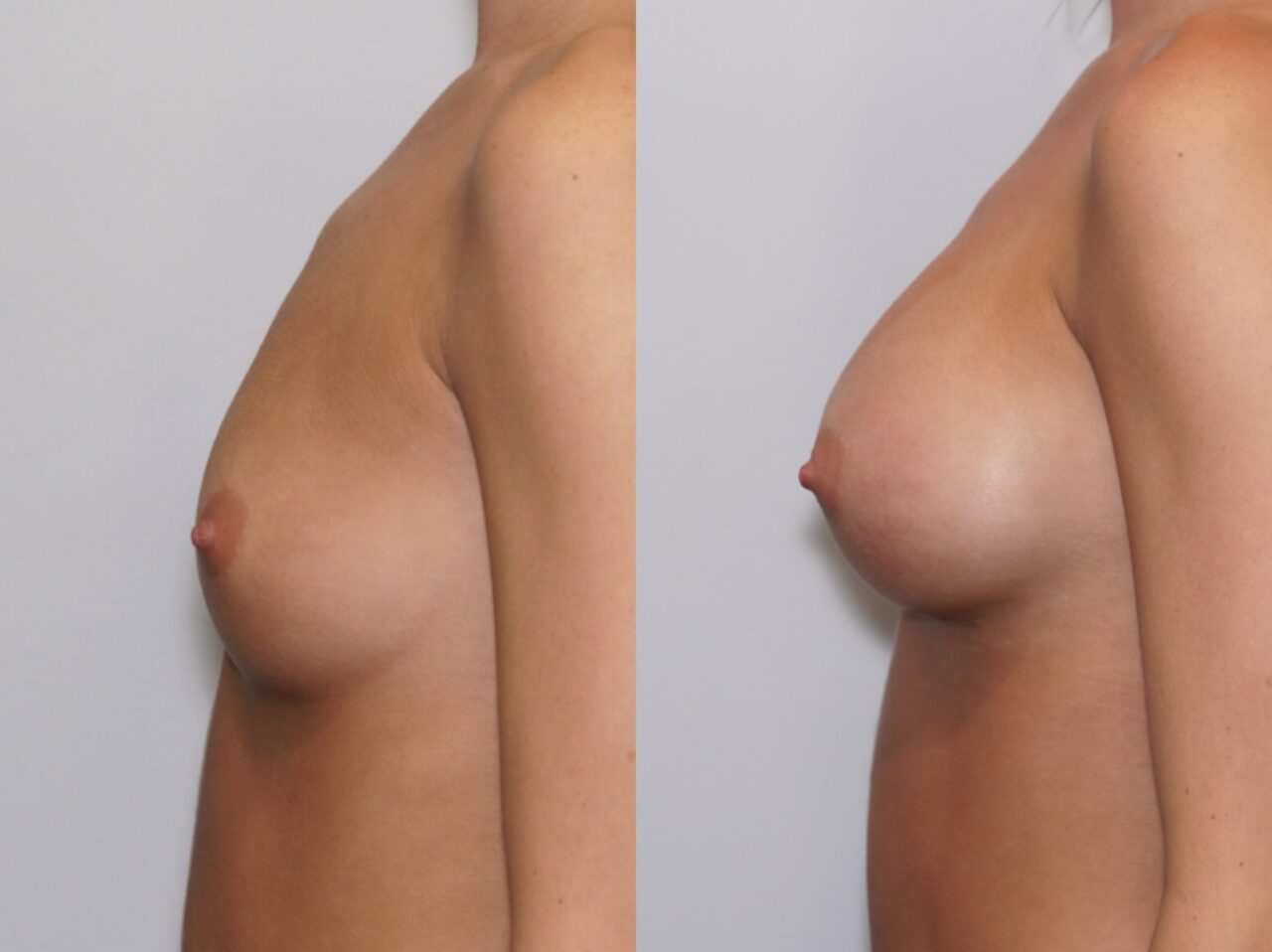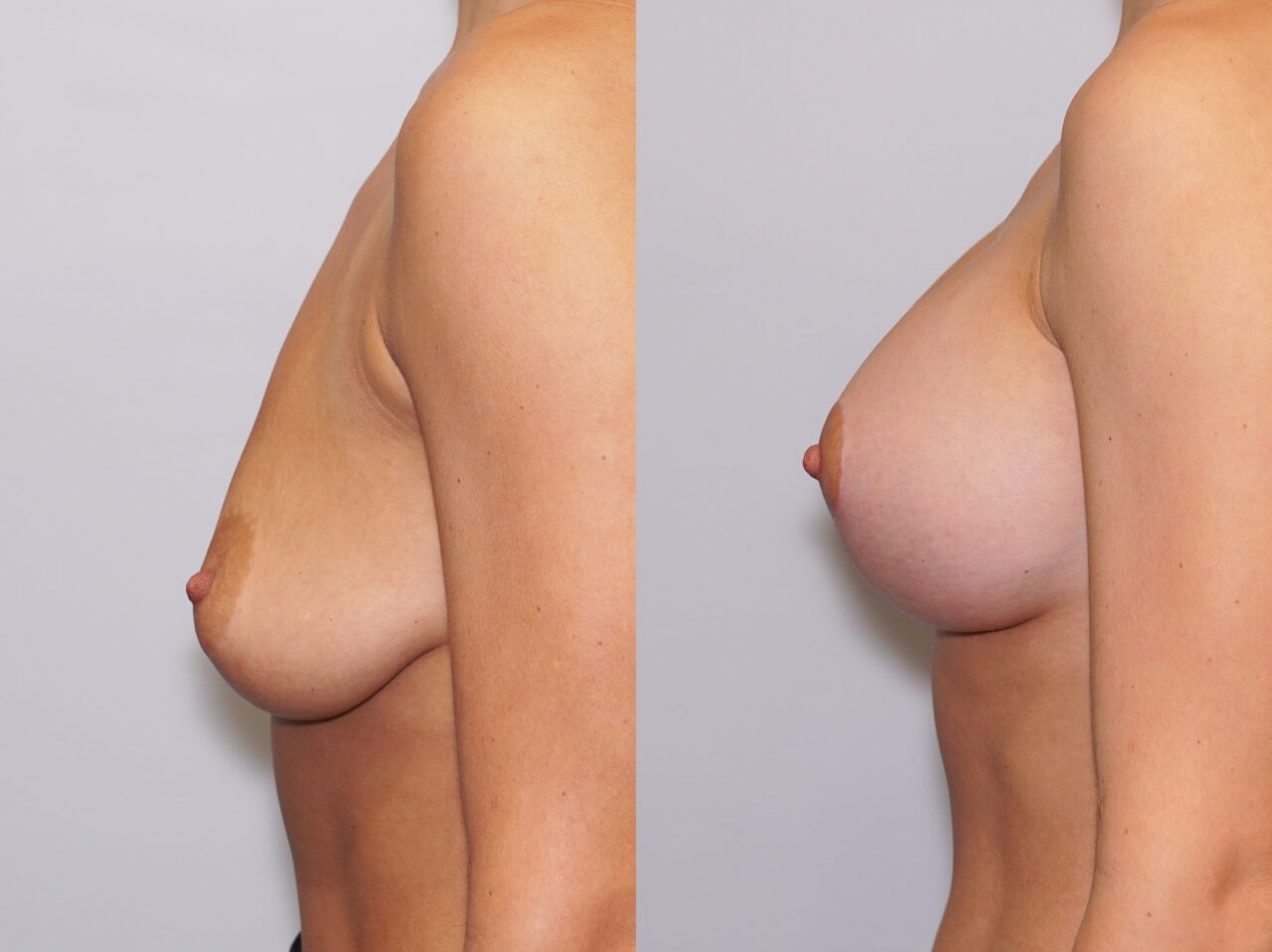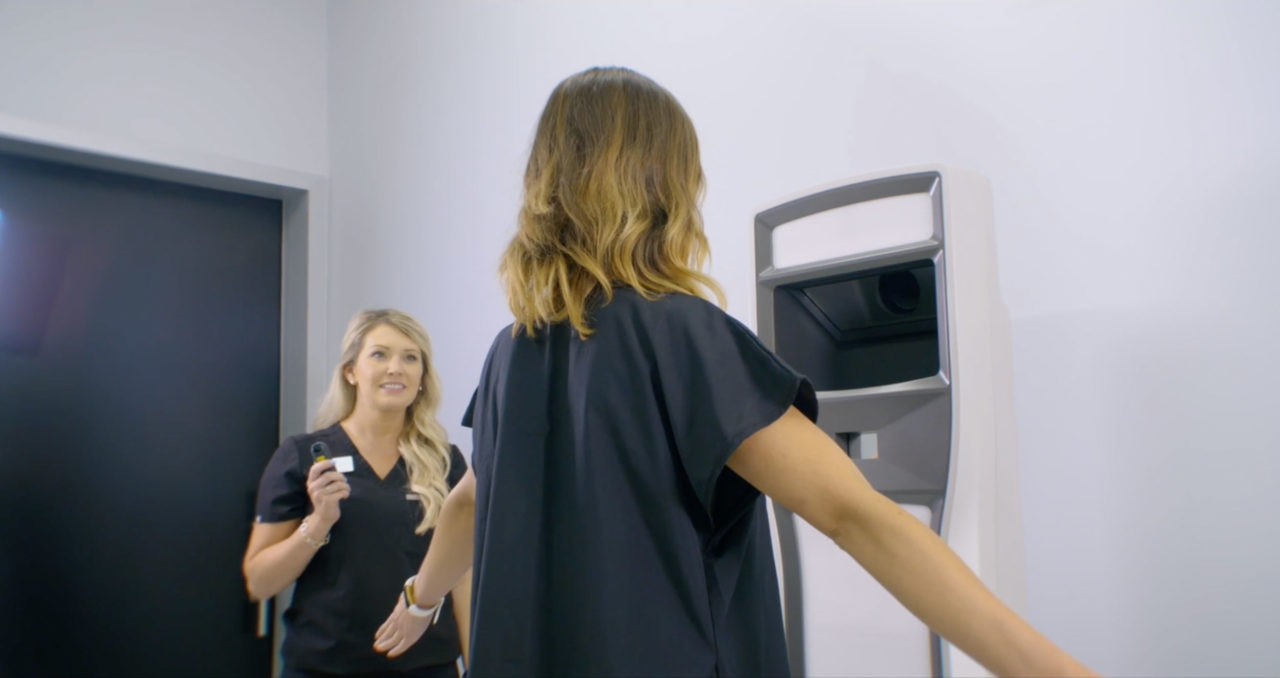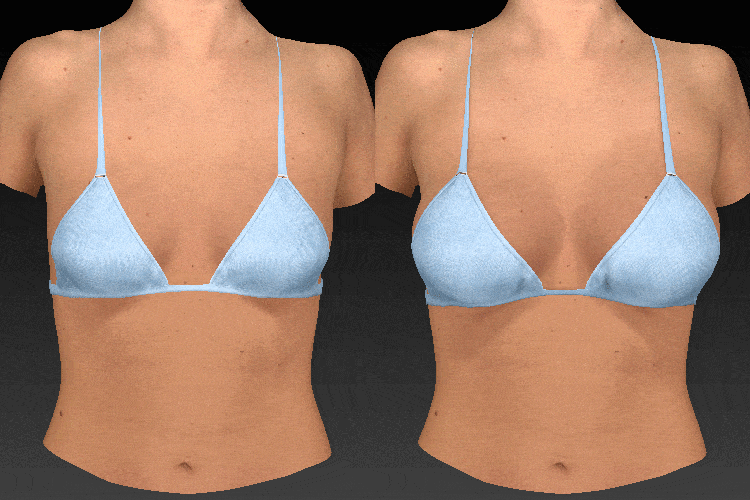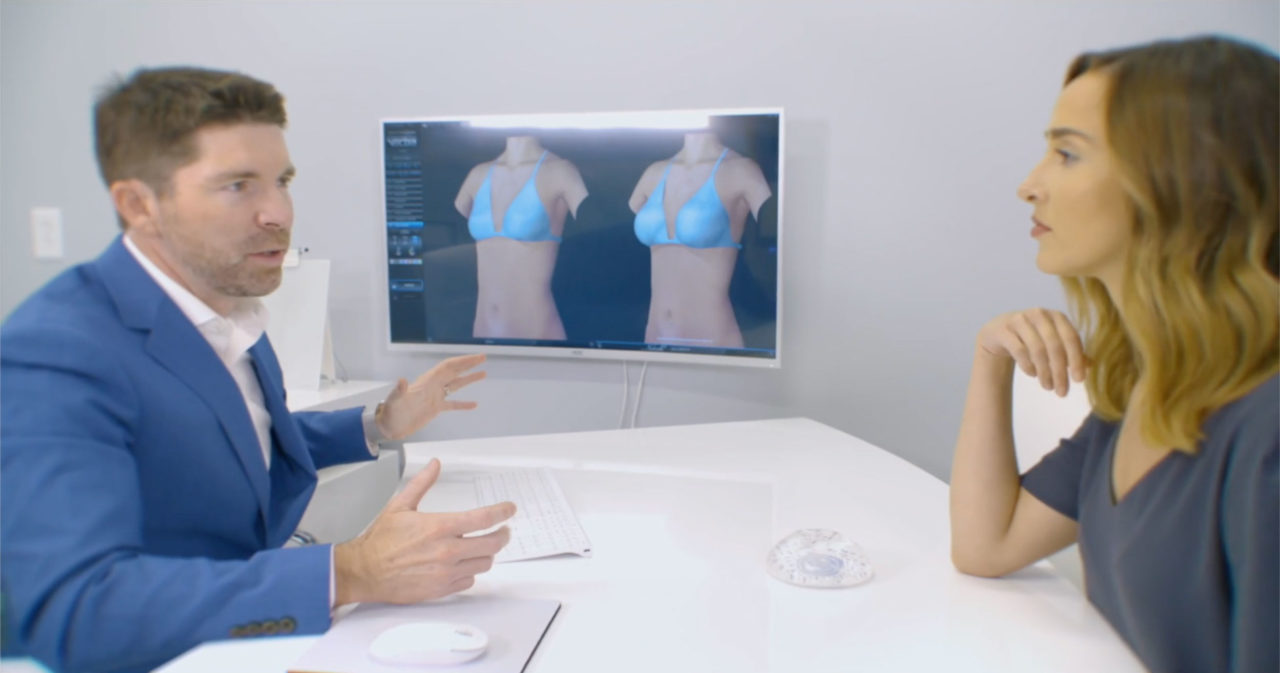2-3 hours
2 weeks Basic
2-4 weeks Full
$8,500+ no implants
$10,500+ with saline implants
$11,500+ with silicone implants
Common Concerns
- My breast are too small
- I want more fullness
- I’ve lost weight and my breasts have no shape
- My breasts sag and my nipples point downward
- My breasts aren’t symmetrical
- I don’t have enough cleavage
- I want a more appealing figure
Frequently Asked Questions
Do I need a breast lift or just an augmentation… or both?
This is the most common question we receive and also the most important decision to address during your consultation. Let’s make it simple by looking at the flow chart below.
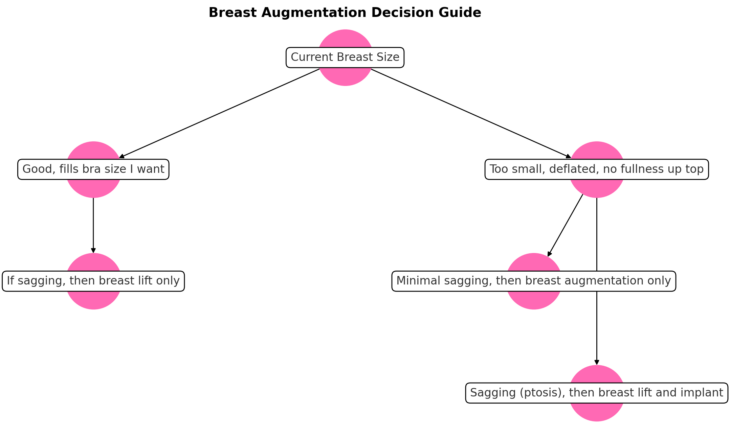
How do I choose my incision type? Cup size?
Vectra 3D Imaging
Now available for Mastopexy.
See your results before surgery by having the Vectra machine take your photo. You will then be able to see your 3-D image instantly on the screen. Do you need implants? Which incision do you need? We can then show you all of the possibilities with the Vectra 3-D.
The benefits of the Vectra 3D imaging:
- Easier than trying on implants
- 90% accuracy based on studies
- Better visualization
- Can try with and without a bra
- Print your images and take home
- View from every angle
How do I know how much breast sagging I have?
If implants are needed, do they go under the muscle or above the muscle?
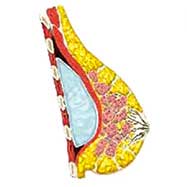
Submuscular (below the muscle) Breast Augmentation
In 95% of the cases, the breast implants will be placed in a submuscular position for two main reasons:
- More natural appearance
- Less risk of capsular contracture (scarring around the breast implant)

Dual Plane Breast Augmentation
This occurs when the implant is placed behind the muscle in the top 2/3 of the implant and behind the gland in the lower 1/3 of the implant. This is performed by surgeons who have experience in this technique in those patients who do not wants the scars from a breast lift but still want implants and they have some mild sagging to the breasts. The dual plane procedure creates a lifting and rotation of the breast tissue.
Subglandular (above the muscle) Breast Augmentation
This is performed infrequently due to the higher risk of capsular contracture. There are some patients who do benefit from this type of placement:
- Constricted or tubular breasts (better expansion with this technique)
- Sagging of the breasts but not interested in a lift
- These patients can have too much sagging
- They need to have thicker breast tissue to cover the implant
What types of incisions are made for a Mastopexy?
- Crescent Incision — The least common incision since very little lift can be obtained. It does slightly lift the nipple position and the implants can be placed through the same location if needed.
- Periareolar (Donut) Incision — This incision is hidden along the color change of the areola. The scar can be very discreet in some patients. It can provide several centimeters of lifting to the nipple and also reduce the excess skin of the breast with a small scar. Implants can be placed through this incision as well.
- Vertical (Lollipop) Incision — Probably the most common incision since more lifting can be performed with this incision and more sagging breast skin can be removed. Commonly performed with implant placement for more upper pole fullness.
- Anchor Incision — The most traditional scar that can remove the maximum amount of skin and provide the most lifting if needed. Implants can also be used and placed through the same incisions.
Surgery Details
- Anesthesia:
- General
- Location:
- Augusta Plastic Surgery Center located in Martinez, GA
- ASC Certification:
- AAAASF
- Surgeons:
- Dr. Christopher Ewart and Dr. Michael Tarakji
